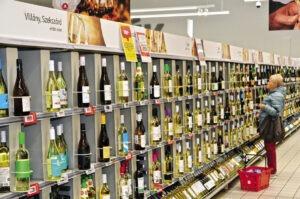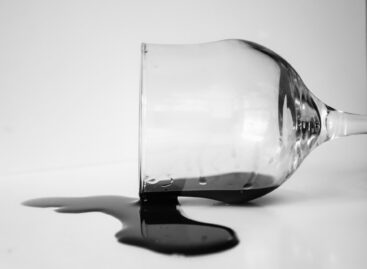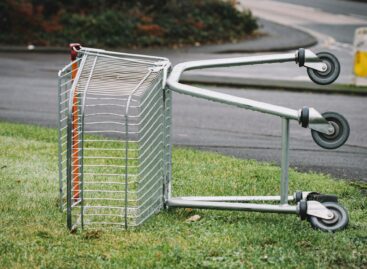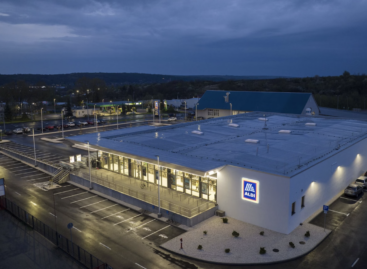Market knowledge, networking and marketing
This article is available for reading in Trade magazin 2024/11

Márió Spáda
wine category specialist
METRO
Márió Spáda, wine category specialist of METRO:
“Looking at the main trends, the premium quality is booming, while sales of medium category wines are down and the people who used to buy these have moved on to entry-level wines. In Hungary sparkling wine consumption has become synonymous with celebration, so it is almost exclusively during the festive season that Hungarians buy it. Pét-Nat is a big hit: natural, unfermented sparkling wine with yeast and fine lees”.

Márk Maczelka
head of communications
SPAR Magyarország
“We have made great changes in our product selection this year, with a focus on quality, so that SPAR customers can buy value-for-money wines and sparkling wines. Hungarian consumers still prefer Hungarian wines, but they are also increasingly open to foreign ones. Currently the majority of shoppers are looking for lighter, fragrant, fruity varieties such as Irsai Olivér”,
reports Márk Maczelka, SPAR’s head of communications.

Hungarian consumers still prefer Hungarian wines
Seasonal products are popular

Attila Nagy
sales director
Auchan
Attila Nagy, sales director of Auchan:
“Wine is one of our strategic areas, so in the lower and medium price categories Auchan’s offering competes with those of specialists, and we are constantly expanding the range of premium products. We have the biggest constant selection of domestic and international wines and sparkling wines in our stores, with over 1,000 different wines available every day of the year, plus a constantly changing range of seasonal or special offers”.

Judit Tőzsér
head of company communication
Lidl Hungary
“Lidl Hungary attaches great importance to supporting Hungarian wine producers and wineries. In 2014 we launched the Lidl Wine Expo Hungary programme, as part of this contributing to the sales of some 29 million bottles of Hungarian wine last year. In wine consumption there is a clear trend towards sparkling and semi-sparkling wines and wine-based cocktails”,
informs Judit Tőzsér, Lidl’s head of company communication.
White leads, followed by alcohol-free
ALDI has experienced a significant rise in wine and sparkling wine sales over the past year and a half. The popularity of premium wines is growing among consumers. ALDI expects the final months of 2024 to continue to bring strong sales, particularly for premium products. ALDI’s wine and champagne assortment has evolved over the past eighteen months, and the discounter chain has set its prices with great care to ensure that every customer segment can find the right product for them.
Márió Spáda adds that for a few years sales of white wines have been growing dynamically, with Irsai Olivér and Sauvignon Blanc being particularly popular, but classics such as Italian Riesling and Chardonnay are also on the rise. The 2025 METRO Wine of the Year competition is currently underway, offering a great opportunity to build and deepen supplier relationships. A special feature of METRO’s wine departments is the presence of in-store wine experts.

Consumers have turned to higher quality wines that offer better value for money
Buyer needs and expert help
SPAR is in direct contact with most of its suppliers and the retailer is regularly informing winemakers about the changes in consumption habits, so that they make wines that customers actually want. For instance this summer SPAR asked customers about their wine drinking habits, as part of the “big wine test”. Auchan cooperates with experts and reviews the product selection every year. They are sourcing wine directly from the winemakers as much as possible. 90% of Auchan’s wine offering is domestic products, as it is important for them to support Hungarian wineries. By now the number of direct supplier wineries has exceeded 80. With many winemakers they develop unique products made exclusively for Auchan, plus premium category limited series as well.
Export and import
Lidl’s observation is that Hungarian consumers prefer fragrant wines, light rosés, and various sparkling and semi-sparkling wines. The most popular varieties are Irsai Olivér and Sauvignon Blanc. Lidl’s assortment now includes both permanent and special offers from renowned national wineries and smaller family and artisan wineries. Hungarian wineries sold more than 200 million bottles of Hungarian wine over the past 10 years with Lidl’s help, and half of this quantity has been exported. In ALDI stores there is a clear increase in demand for white wines, while the popularity of rosé and red wines hasn’t diminished. This is why the company is strengthening these segments, with the focus on fragrant, light white wines in summer and fuller-bodied red wines in the colder months. ALDI actively communicates with its partners about how to meet customer needs. It regularly shares its own sales experience, consumer feedback and market observations with its suppliers, so that they can use this information in product development. //
From the perspective of wine bars

Gergő Szakács
general manager
DiVino
DiVino was established in 2011 and currently has a franchise network of 8 bars. Their goal is to give an opportunity to young winemakers. General manager Gergő Szakács told: they haven’t increased prices in the last year and a half. Their assortment is kind of seasonal, with red wines more prevalent in winter and autumn and whites and sparkling wines dominating in spring and summer. The consumption of rosé wines is decreasing year by year. A large proportion of rosé drinkers have switched to lighter whites and prefer to order Italian Riesling, Tramini or Yellow Muscatel. //
Related news
Hungarian wine industry in danger
🎧 Hallgasd a cikket: Lejátszás Szünet Folytatás Leállítás Nyelv: Auto…
Read more >Same basket, different purchasing power: Lidl price test highlights European differences
🎧 Hallgasd a cikket: Lejátszás Szünet Folytatás Leállítás Nyelv: Auto…
Read more >The Hungarian Food Bank is putting together 44,000 food packages from the proceeds of ALDI’s first Advent market
🎧 Hallgasd a cikket: Lejátszás Szünet Folytatás Leállítás Nyelv: Auto…
Read more >Related news
New Year’s Eve: shortened opening hours in stores – general store closure on January 1
🎧 Hallgasd a cikket: Lejátszás Szünet Folytatás Leállítás Nyelv: Auto…
Read more >Tejföl is only a name for live flora: new categories for sour dairy products will be introduced from 2026
🎧 Hallgasd a cikket: Lejátszás Szünet Folytatás Leállítás Nyelv: Auto…
Read more >Sausage prices before New Year’s Eve: cheap entry, expensive premium – how big is the gap on the shelves?
🎧 Hallgasd a cikket: Lejátszás Szünet Folytatás Leállítás Nyelv: Auto…
Read more >






